Toy cars are a great tool for learning about forces such as friction, momentum, inertia, and the effect of changing ramp gradients.
For some activities, you’ll need a few extra items, but hopefully, you already have most of them around the house.
Grab some toy cars and start experimenting!
Science investigations using toy cars
1. Toy car friction ramp
Our DIY friction ramp uses a large sheet of thick cardboard split into several lanes. Each lane is covered with a different material. This activity is a great way to demonstrate how some surfaces have more friction between themselves and another object than others.
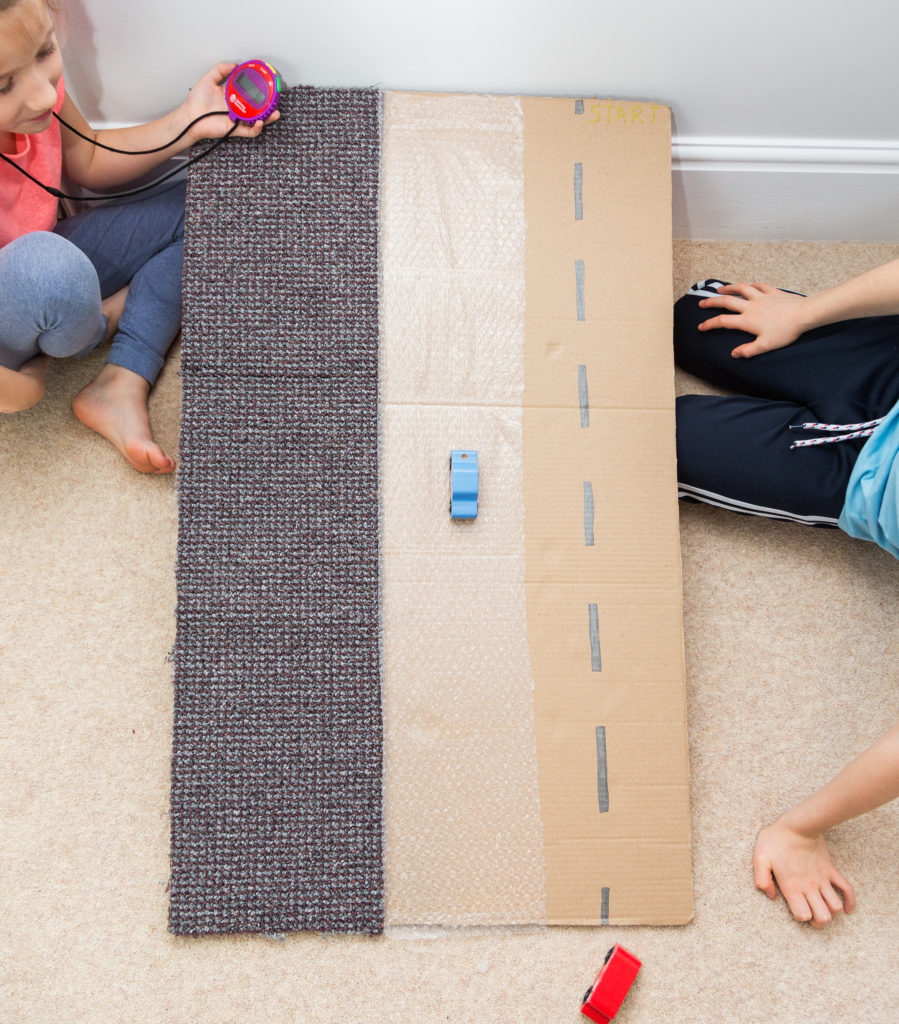
2. Balloon-powered toy car
This fun balloon-powered car is made from LEGO. A balloon-powered car is a great way to learn about kinetic energy, potential energy, conservation of energy and Newton’s Laws of Motion.

3. Learn about momentum with a toy car
All moving objects have momentum. Another way to think about momentum is how hard it is to stop a moving object. It’s harder to stop an object moving quickly than an object moving slowly.
Use a toy car to demonstrate and learn all about momentum.
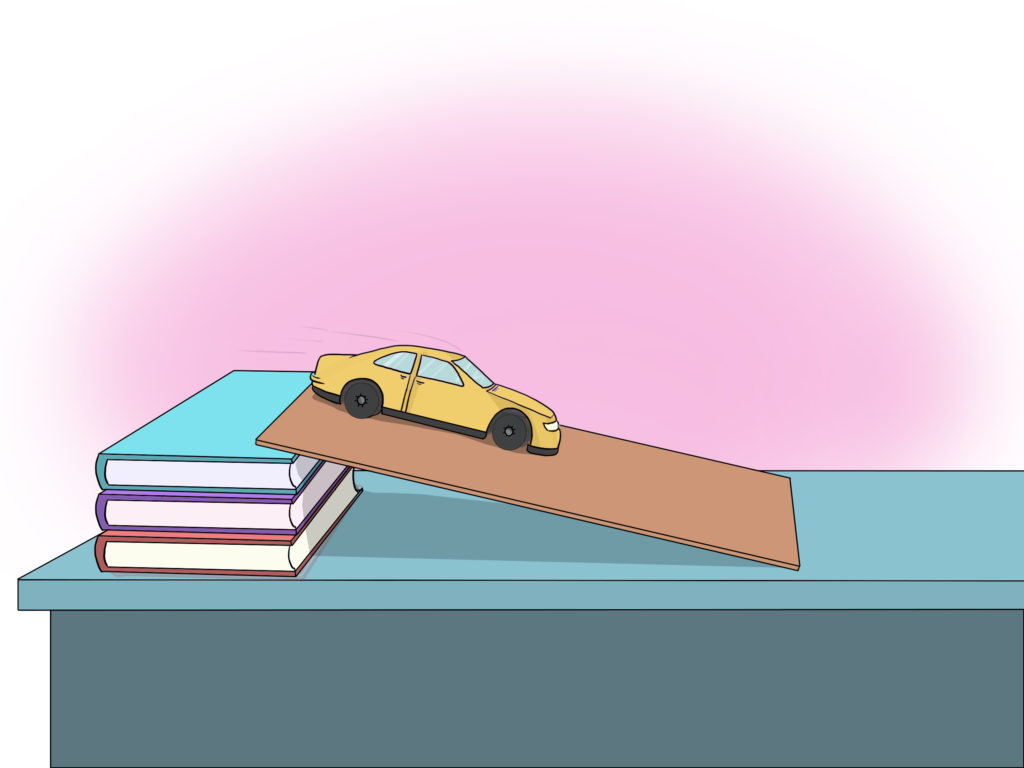
4. Gradient and speed investigation
Use a ramp to investigate how the distance travelled by a toy car is affected by the slope gradient and the ramp’s surface.
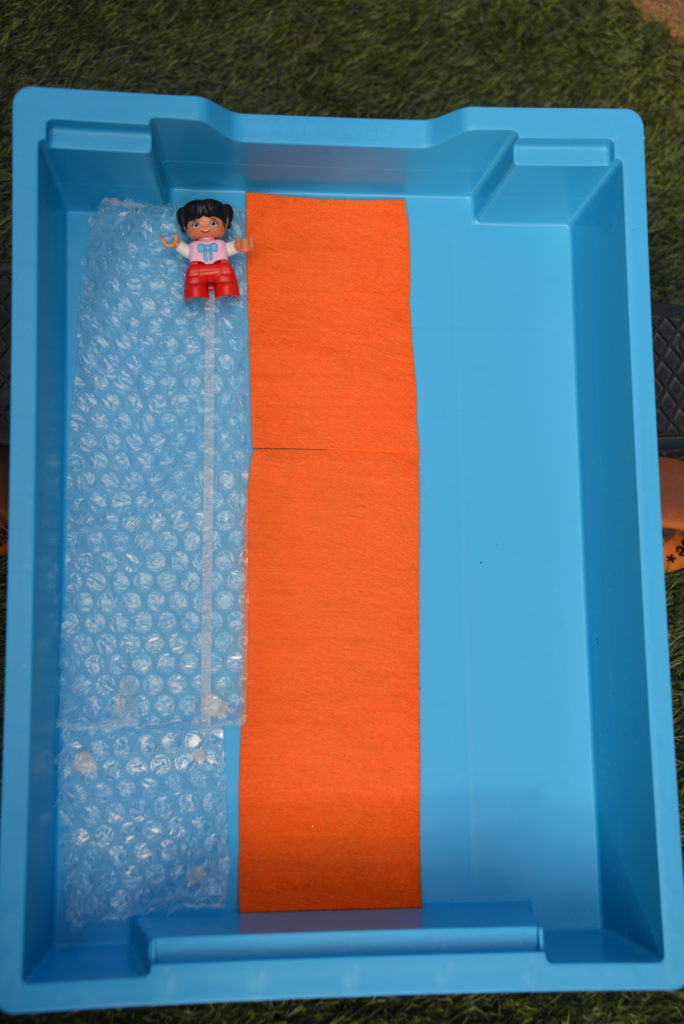
5. Magic magnetic cars
Make simple magnet-powered cars to learn about magnetism. Race them, steer them and even design your own race track! These are simple to make and work brilliantly!
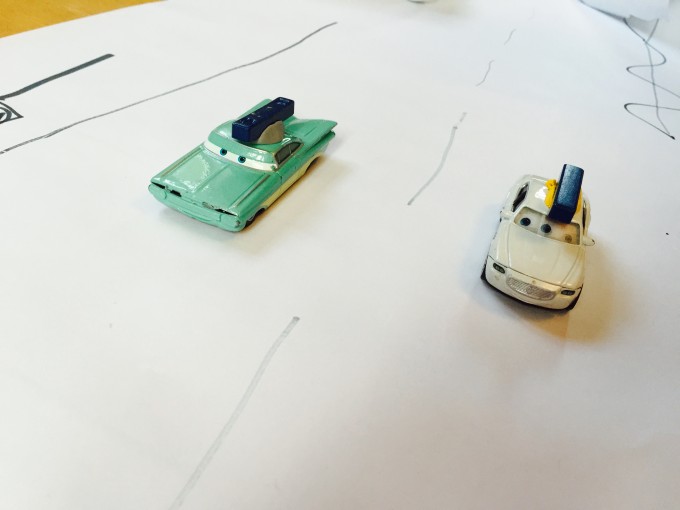
More science experiment ideas for preschoolers
Embrace the messy side of science with a sensory science station. Make fizzy potions, oobleck slime and lots more.
Frugal Fun also has some great ideas for science experiments with toy cars.
Try some magic opening flowers made using just paper and a tray of water or one of my other preschool science experiments!
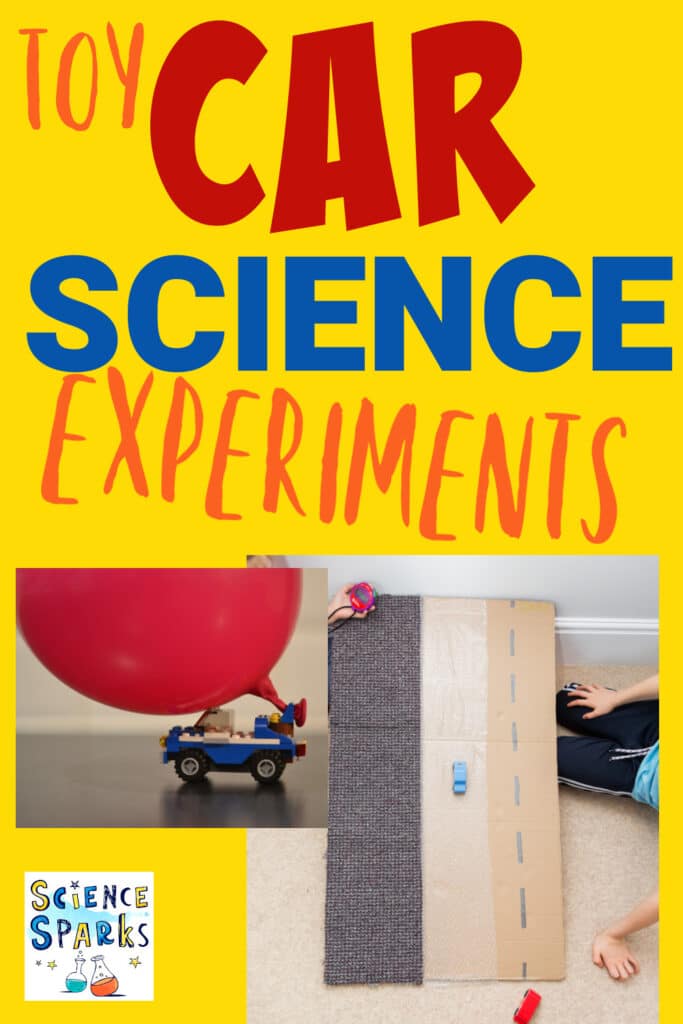
Last Updated on September 18, 2024 by Emma Vanstone

Leave a Reply